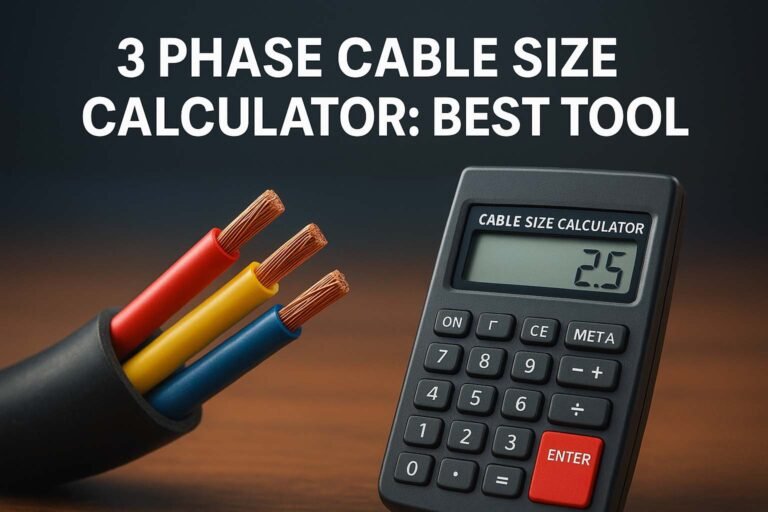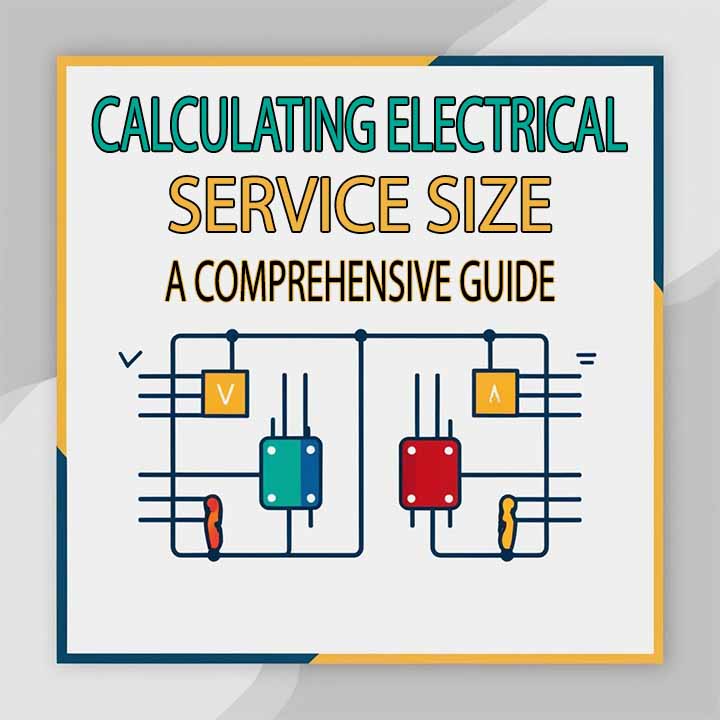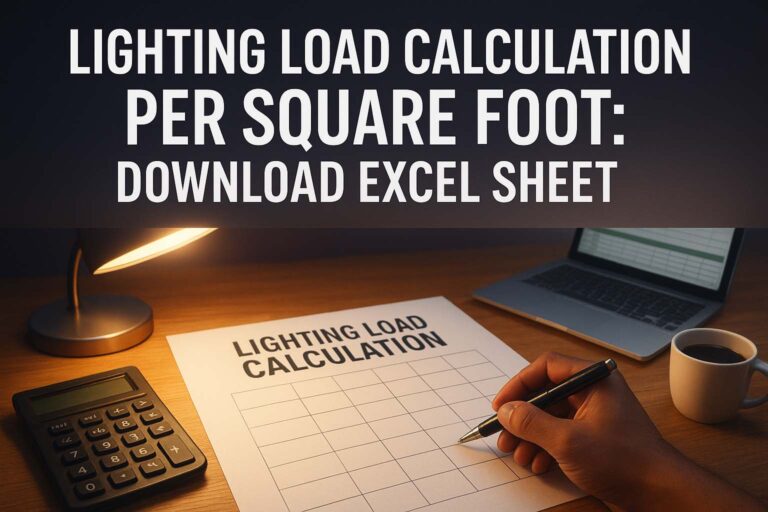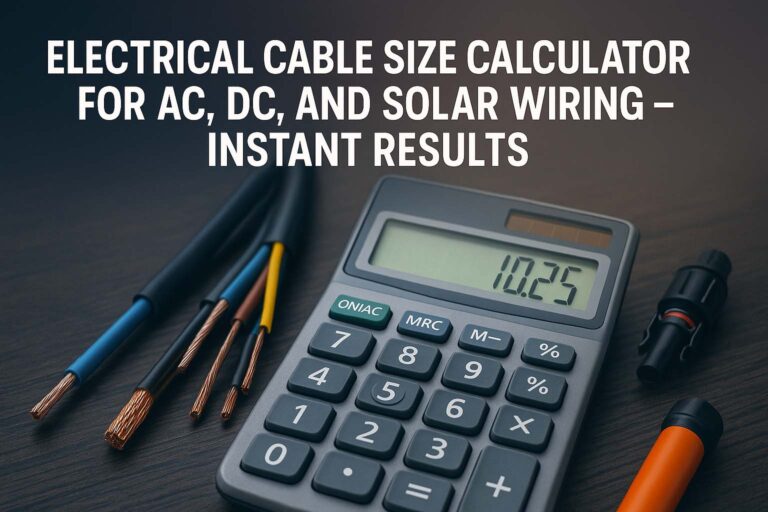KW to Cable Size Calculator: Best Tool for Engineers
Choosing the right cable size is one of the most important steps in electrical design. Whether you are working on a home wiring project, industrial installation, or a commercial facility, the cable must be capable of carrying the load safely without overheating. Many people struggle when converting kilowatts (kW) to the appropriate cable size because the calculation is not just about power.
It also involves factors like current, voltage drop, ambient conditions, and type of cable insulation. That is where a kW to cable size calculator comes in handy. If you want a ready-made tool for fast and accurate results, check out this 3 phase cable size calculator which makes the process simple.
Table of Contents
Table of Contents
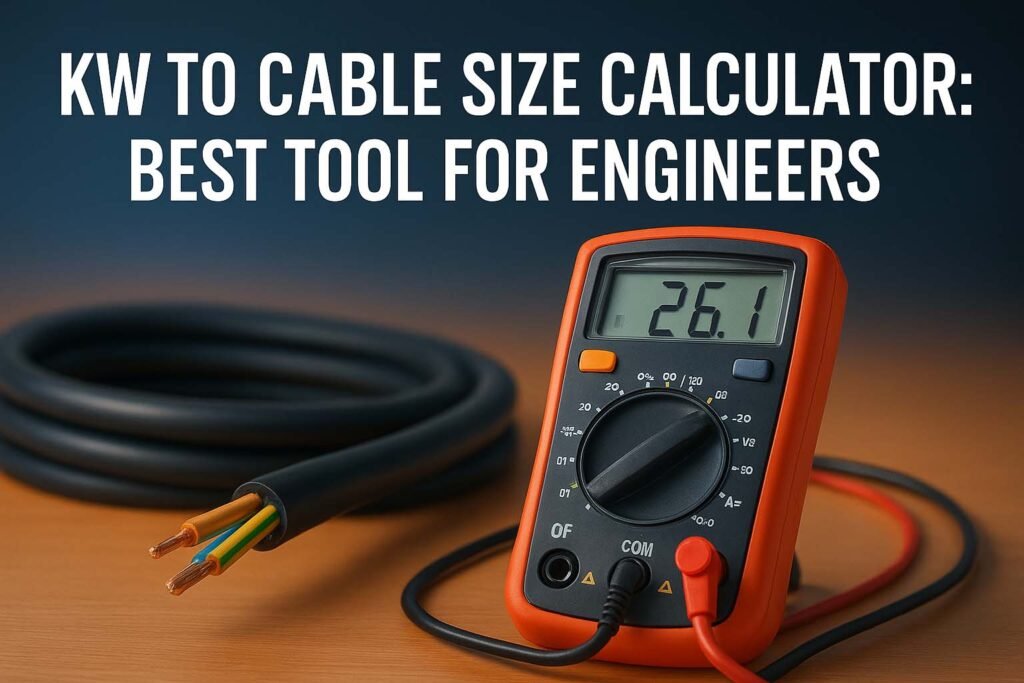
Before diving deep into formulas and tables, it is important to understand why cable sizing matters. An undersized cable can overheat, melt insulation, and cause fire hazards. On the other hand, an oversized cable increases project costs unnecessarily. So, finding the balance is crucial.
This guide will explain everything you need to know about a kW to cable size calculator, including technical insights, real-world examples, and useful tables. You will learn how to convert kW into current, how to factor in system voltage, and how to select the right conductor size.
Key Takeaways
- A kW to cable size calculator helps select the right cable by converting power into current and matching it with conductor ratings.
- Correct cable sizing improves safety, reduces energy losses, and ensures long equipment life.
- Factors like supply voltage, cable length, ambient temperature, and installation method must be considered in every calculation.
- Ready-to-use online tools like the 3 phase cable size calculator can save time and minimize human error.
Why Use a KW to Cable Size Calculator?
When you know the load power in kilowatts, the next step is to figure out how much current it will draw. This current determines the cross-sectional area of the cable. While tables are available in electrical codes, a kW to cable size calculator automates the process. It gives you results instantly after entering basic inputs like power, voltage, and power factor.
For engineers, the calculator saves time in design. For electricians, it ensures correct installation without guesswork. And for homeowners, it provides clarity when installing appliances like air conditioners, pumps, or electric heaters.
Know more about power factor correction calculation
Technical Insight – Converting kW to Current
To calculate cable size, you first need the current (I). The formula depends on whether the system is single-phase or three-phase.
For single-phase systems:
I = (kW × 1000) ÷ (V × PF × η)
For three-phase systems:
I = (kW × 1000) ÷ (√3 × V × PF × η)
Where:
- kW = load power in kilowatts
- V = supply voltage
- PF = power factor (usually 0.8 to 1.0 for most loads)
- η = efficiency (typically 0.9 to 1 for motors)
Once current is known, you can match it with cable ampacity tables.
Example – 15 kW Motor
Suppose you have a 15 kW motor running on a 400V three-phase supply with a power factor of 0.9 and efficiency of 0.95.
I = (15 × 1000) ÷ (1.732 × 400 × 0.9 × 0.95)
I = 25.3 A
So, the motor requires a cable that can safely carry at least 26A. Referring to standard copper cable charts, a 4 mm² cable is suitable, but for longer runs, a bigger size may be needed to control voltage drop.
Know more about breaker sizes calculation
Factors Affecting Cable Size
A kW to cable size calculator considers more than just power. These additional factors play a key role:
- Cable length: Longer runs increase voltage drop, requiring larger cables.
- Ambient temperature: High temperatures reduce current carrying capacity.
- Installation method: Cables in conduit, buried in soil, or open air have different derating factors.
- Type of conductor: Copper has higher conductivity than aluminum, so sizes differ.
- Future load expansion: Slight oversizing helps avoid future rewiring.
Ignoring these factors may lead to unsafe or inefficient installations.
KW to Cable Size Calculator Table
Below is a general guide for three-phase copper cables at 0.9 power factor and 400V supply. Values are approximate and may vary depending on local standards (IEC, NEC, BS).
| Load (kW) | Current (A) | Recommended Cable Size (mm² Copper) |
|---|---|---|
| 5 kW | 8.0 A | 2.5 mm² |
| 10 kW | 16.1 A | 2.5 – 4 mm² |
| 20 kW | 32.2 A | 6 mm² |
| 30 kW | 48.3 A | 10 mm² |
| 40 kW | 64.4 A | 16 mm² |
| 50 kW | 80.5 A | 25 mm² |
| 75 kW | 120.7 A | 35 – 50 mm² |
| 100 kW | 161.0 A | 70 mm² |
This table provides a starting point. For precise results, always use a kW to cable size calculator that accounts for installation conditions.
Use our online tool watts to amps calculator
Voltage Drop Consideration
One of the main technical reasons to oversize a cable is voltage drop. Excessive drop reduces equipment efficiency and may cause motor overheating.
Voltage drop (Vd) is given by:
Vd = (I × L × R) ÷ 1000
Where:
- I = load current
- L = one-way cable length in meters
- R = resistance per km of cable (from standards)
In general, the voltage drop should not exceed:
- 3% for lighting circuits
- 5% for motor or power circuits
A kW to cable size calculator often includes voltage drop checks, making it more reliable than manual calculations.
Copper vs. Aluminum in Cable Sizing
The choice of conductor material influences the cable size.
- Copper cables have higher conductivity, so smaller cross-sectional areas are needed. They are durable but cost more.
- Aluminum cables are cheaper and lighter, but require larger sizes for the same current capacity.
For industrial setups where long runs are common, aluminum is often used to reduce cost, but proper sizing is crucial.
Real-World Example – Pump Installation
Consider a 25 kW water pump at 415V, three-phase, 100 meters away from the panel. The load current is around 45A. If you choose a 10 mm² cable, the voltage drop might exceed limits over such a distance. In that case, a 16 mm² copper cable or 25 mm² aluminum cable would be better. This shows why relying only on kW-to-current conversion is not enough. A calculator that factors in distance gives more accurate results.
Use our online tool awg to mm2 calculator
Benefits of Using a KW to Cable Size Calculator
- Accuracy: Reduces the chance of human error.
- Time-saving: Quick results without manual lookup in tables.
- Compliance: Meets local electrical codes and standards.
- Safety: Prevents overheating and fire risks.
- Cost optimization: Avoids unnecessary oversizing.
Whether you are designing a factory, wiring an office, or installing a home generator, a kW to cable size calculator is an essential tool.
FAQs on KW to Cable Size Calculator
1. Can I size a cable just by looking at kW?
Not exactly. You must convert kW to current and consider voltage, power factor, and installation conditions.
2. Is copper always better than aluminum?
Copper is technically better, but aluminum is cost-effective for large projects. The calculator helps you decide the correct size for both.
3. What happens if I use a smaller cable than required?
The cable will overheat, insulation may fail, and it can cause fire hazards.
4. Does cable size affect energy bills?
Yes. Undersized cables cause higher losses, leading to more energy consumption. Correct sizing improves efficiency.
5. Can I rely fully on online calculators?
Calculators are reliable but should be cross-checked with standards and practical conditions.
Use our online tool conduit size calculator
Conclusion
Cable sizing is more than just matching kW with wire thickness. It requires converting kW into current, applying correction factors, and checking voltage drop. A kW to cable size calculator simplifies this complex process by giving quick, accurate, and safe results. For larger installations, especially in three-phase systems, you can use the 3 phase cable size calculator to handle calculations instantly and avoid errors.
Follow Us on Social:
Subscribe our Newsletter on Electrical Insights for latest updates from Electrical Engineering Hub
#kWtocablsizecalculator, #cablesizecalculator, #electricalcalculator, #wireandcablesizing, #cablesizebyload, #cablesizefordistance, #cablesizingguide, #3phasecablesize, #singlephasecablesize, #electricaldesign, #loadtocablecalculator, #cableselection, #kwtokva, #electriccablesizing, #cablesizingcalculator

